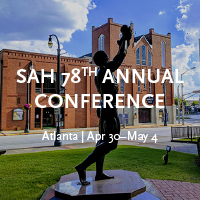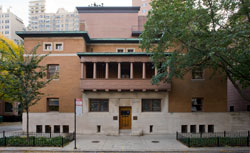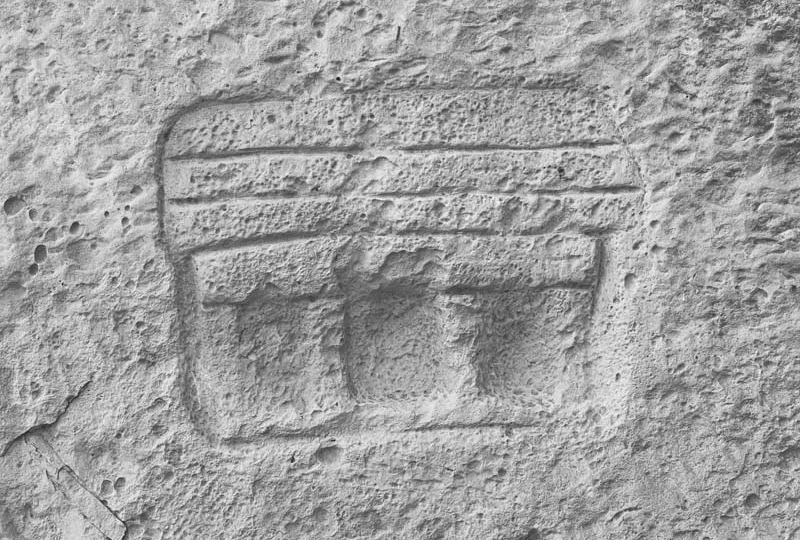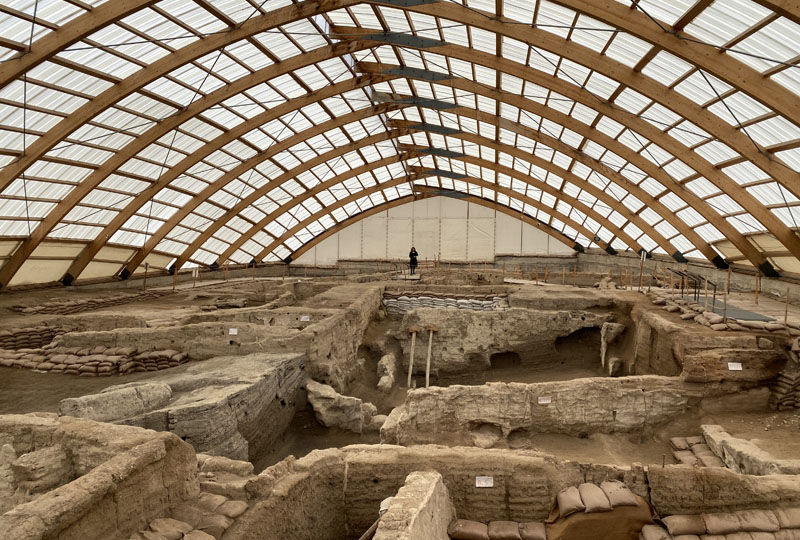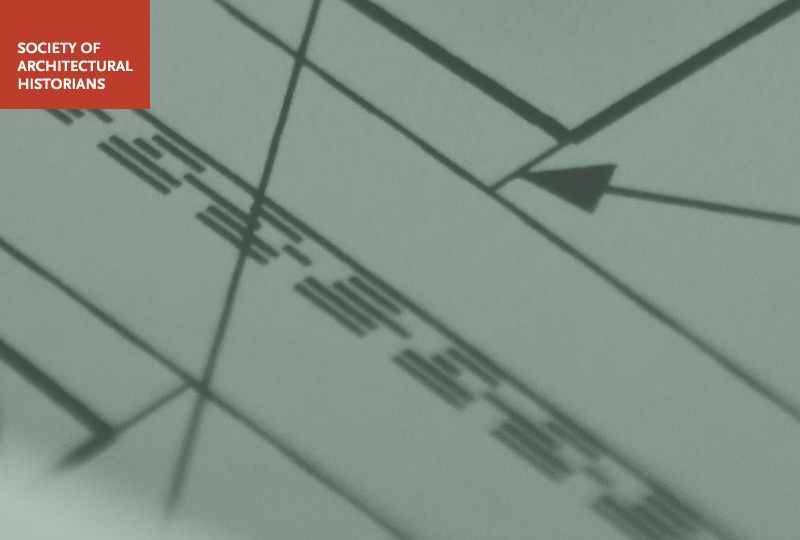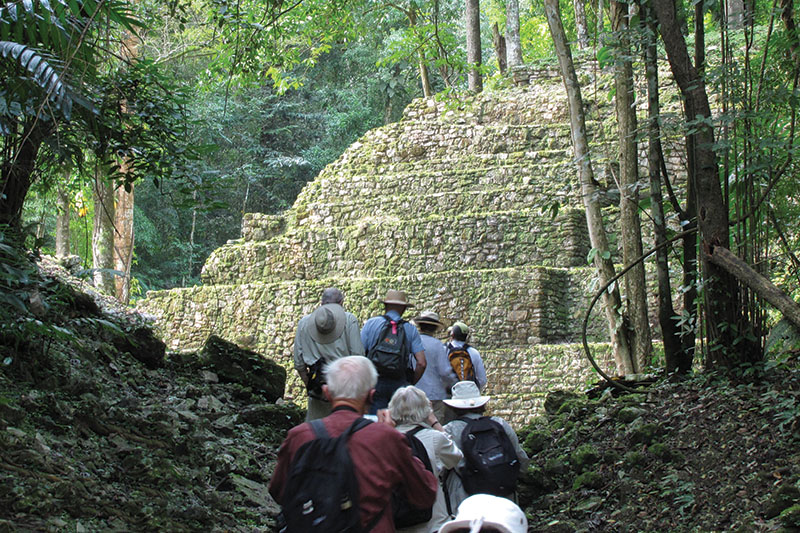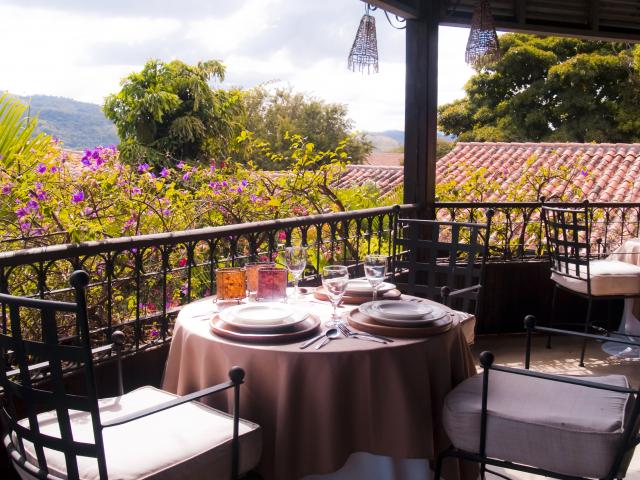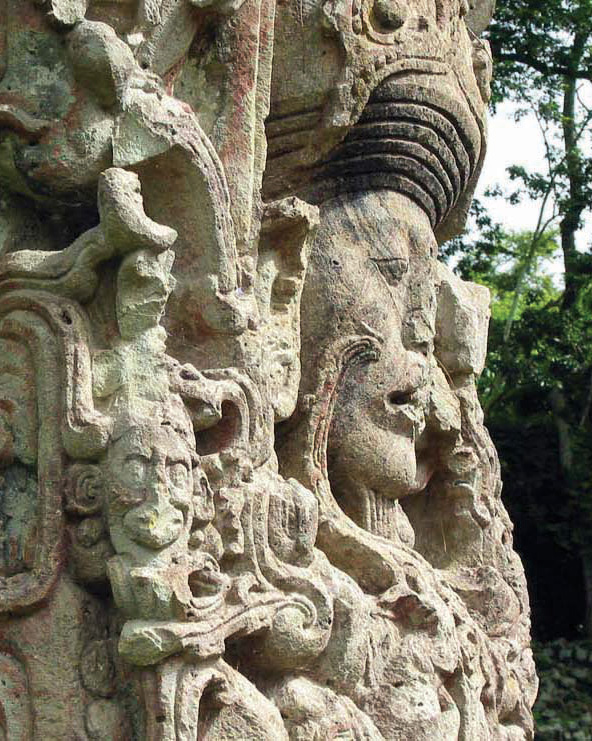-
Membership
Membership
Anyone with an interest in the history of the built environment is welcome to join the Society of Architectural Historians -
Conferences
Conferences
SAH Annual International Conferences bring members together for scholarly exchange and networking -
Publications
Publications
Through print and digital publications, SAH documents the history of the built environment and disseminates scholarshipLatest Issue:
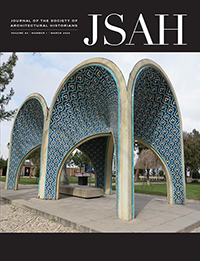
-
Programs
Programs
SAH promotes meaningful engagement with the history of the built environment through its programsMember Programs
-
Jobs & Opportunities
Jobs & Opportunities
SAH provides resources, fellowships, and grants to help further your career and professional life -
Support
Support
We invite you to support the educational mission of SAH by making a gift, becoming a member, or volunteering -
About
About
SAH promotes the study, interpretation, and conservation of the built environment worldwide for the benefit of all
Call for Papers: Environment in Architecture’s History and Architecture in Environment’s History
United Kingdom
Dana Katz
IJIAclimate@gmail.com https://www.intellectbooks.com/international-journal-of-islamic-architecture?fbclid=IwY2xjawH8UD1leHRuA2FlbQIxMAABHXzur_z-nbA09jyeJW5_JxLA7iUs3Sm21bblkNfdV9B_7N8CfqVQ3NLebw_aem_UIEPy_52dLA1yRUv6Y891A
IJIAclimate@gmail.com https://www.intellectbooks.com/international-journal-of-islamic-architecture?fbclid=IwY2xjawH8UD1leHRuA2FlbQIxMAABHXzur_z-nbA09jyeJW5_JxLA7iUs3Sm21bblkNfdV9B_7N8CfqVQ3NLebw_aem_UIEPy_52dLA1yRUv6Y891A
Add to:
CALL FOR PAPERS
International Journal of Islamic Architecture (IJIA)
Special Issue: Environment in Architecture’s History and Architecture in
Environment’s History
Guest editor: Esra Akcan
Thematic volume planned for: 2027
Abstract submission deadline: June 1, 2025
One may misleadingly infer from the data on the built environment’s
responsibility in causing climate change that architects have not paid
attention to climate. To the contrary, however, there is hardly any other
criterion as ordinary and as omnipresent as climate in architectural design. A
forthcoming special issue of the International Journal of Islamic
Architecture will address the intersection of geopolitical and
ecological concerns in architecture and explore the multidirectional and
multilateral relations between the three words in its title—architecture,
history, environment. Articles will evaluate architecture’s role in climate
change by writing not only the history of architecture with respect to climate
but also the history of climate due to architecture.
From the writings of Vitruvius to guidebooks on corporate environmentalism,
references to environmental regulation and considerations of the sun and the
wind, the heat and the cold, rain and snow, have been regular inputs for
designers of buildings around the world. Established historians have provided a
large spectrum of definitions for climate, ranging from a criterion to be
controlled to one that inspires difference: Johann Winckelmann’s climate
determinism has long shaped the Euro-American notions of beauty and artistic
superiority; Bruno Taut has critiqued climate imperialism in Japan and Turkey;
Reyner Banham has offered a history of western modern architecture as a chain
of technological inventions that move towards a seamless closed interior; Ken
Frampton has critiqued this chain as a trivialization of cultural heritage; and
Daniel Barber has endorsed midcentury climatic modernism by foregrounding the
façade as the mediator between the interior of a building and the climate of
its exterior. This issue of IJIA will build on this discourse,
but pay particular attention to architecture’s accountability for climate
change over time. It particularly calls for contributions that critically
analyze historical examples when concerns over climate were complicit with
colonialism, nationalism, ethnocentrism, or religious fundamentalism. Given
that climate has served as a proxy for nation and race for much of the modern
and colonial periods, this special issue calls for a layered understanding of
the intertwinement between social, global and environmental issues in
architectural history.
The issue hopes to provide a
layered global and planetary history that extends the narrative beyond the
recent ones on the colonization and decolonization of the world due to the
British, French, and Spanish empires. Though helping to right earlier accounts
and expose the entanglement of modernity, capitalism, and coloniality, these
studies still exclude large portions of the world. Their accumulated outcome
ignores differences between lands before and after they were colonized by
either of the European imperial powers, and modernity’s other dark sides,
including environmental degradation caused by national partitions, religious
divides, or ethno-centrism.
Contributors are encouraged to
submit rigorously researched articles that acknowledge the unity of the earth’s
ecosystem while engaging the unique challenges of places traditionally
associated with the ‘Islamic world’. Authors might submit or analyze architectural
projects that come to the realization that the division of the global ecosystem
into nation-states produces environmental damages, and those that envision ways
of multispecies co-living. The special issue hopes that place-based – but not
place-bound – historical analyses will contribute to the writing of global and
planetary histories of modern architecture in a way that responds to call for
understanding geopolitical and ecological issues together.
Welcome are theoretically engaged articles that demonstrate the important role
of history writing in the intersectional matters of global peace and
environmental sustainability, and in bringing societies to a confrontation with
the relation between political and ecological harms of the past. Questions
addressed by contributors might include:
- How can historians evaluate architecture’s role in planetary crises by writing about climate in the history of architecture in such a way that architecture’s role in the history of climate (climate change) is also revealed?
- What are the buildings and large-scale projects that expose the intersections between political and ecological harms?
- (When) is climatic modernism complicit with colonialism, fascism, ethnocentrism or religious fundamentalism
- (How) does the division of the global ecosystem into nation states accelerate ecocide?
- What has been the relation between climate, race and nation as social constructs?
- (How) is global warming and global war related?
- What have been the consequences of the dismissal of local wisdom and conscious production of ignorance in climatization during colonization and nation-state formation?
- A lot has been written about the role of architects and planners in damaging
or improving the environment and biodiversity. What is the role of nonhuman
actors in damaging or improving the cites that humans built?
Articles offering historical and theoretical analysis (Design in Theory; DiT) should be between 6000 and 8000 words. Those on design and practice (Design in Practice; DiP) should be between 3000 and 4000 words. Architecture, urban, landscape or art historians, architects, urbanists, landscape architects, climate scientists, wildlife biologists, botanists, anthropologists, and geographers whose work resonates with the topic of this special issue are welcome to contribute discussions that address the critical themes of the journal. Collaboratively authored articles are also welcome. Contributions are welcomed from individuals at any stage of their careers, and advanced graduate students are encouraged to submit proposals.
Please send a title and a 400-word abstract to IJIA Assistant Editor Dana Katz at IJIAclimate@gmail.com by June 1, 2025.
Authors of proposals will be contacted by July 1, 2025, and may
be requested to submit full article drafts for consideration by January 30,
2026. All submissions will undergo blind peer review, editing, and revision.
For detailed author instructions, please consult
https://www.intellectbooks.com/international-journal-of-islamic-architecture.
Row White
Lorem ipsum dolor sit amet, consectetur adipiscing elit, sed do eiusmod tempor incididunt ut labore et dolore magna aliqua. Ut enim ad minim veniam, quis nostrud exercitation ullamco laboris nisi ut aliquip ex ea commodo consequat. Duis aute irure dolor in reprehenderit in voluptate velit esse cillum dolore eu fugiat nulla pariatur. Excepteur sint occaecat cupidatat non proident, sunt in culpa qui officia deserunt mollit anim id est laborum.
Row BG Green
Lorem ipsum dolor sit amet, consectetur adipiscing elit, sed do eiusmod tempor incididunt ut labore et dolore magna aliqua. Ut enim ad minim veniam, quis nostrud exercitation ullamco laboris nisi ut aliquip ex ea commodo consequat. Duis aute irure dolor in reprehenderit in voluptate velit esse cillum dolore eu fugiat nulla pariatur. Excepteur sint occaecat cupidatat non proident, sunt in culpa qui officia deserunt mollit anim id est laborum.
Row Gray
Lorem ipsum dolor sit amet, consectetur adipiscing elit, sed do eiusmod tempor incididunt ut labore et dolore magna aliqua. Ut enim ad minim veniam, quis nostrud exercitation ullamco laboris nisi ut aliquip ex ea commodo consequat. Duis aute irure dolor in reprehenderit in voluptate velit esse cillum dolore eu fugiat nulla pariatur. Excepteur sint occaecat cupidatat non proident, sunt in culpa qui officia deserunt mollit anim id est laborum.
Row Green
Lorem ipsum dolor sit amet, consectetur adipiscing elit, sed do eiusmod tempor incididunt ut labore et dolore magna aliqua. Ut enim ad minim veniam, quis nostrud exercitation ullamco laboris nisi ut aliquip ex ea commodo consequat. Duis aute irure dolor in reprehenderit in voluptate velit esse cillum dolore eu fugiat nulla pariatur. Excepteur sint occaecat cupidatat non proident, sunt in culpa qui officia deserunt mollit anim id est laborum.
Row CP Dark
Lorem ipsum dolor sit amet, consectetur adipiscing elit, sed do eiusmod tempor incididunt ut labore et dolore magna aliqua. Ut enim ad minim veniam, quis nostrud exercitation ullamco laboris nisi ut aliquip ex ea commodo consequat. Duis aute irure dolor in reprehenderit in voluptate velit esse cillum dolore eu fugiat nulla pariatur. Excepteur sint occaecat cupidatat non proident, sunt in culpa qui officia deserunt mollit anim id est laborum.
Heading 1
Lorem ipsum dolor sit amet, consectetur adipiscing elit, sed do eiusmod tempor incididunt ut labore et dolore magna aliqua. Ut enim ad minim veniam, quis nostrud exercitation ullamco laboris nisi ut aliquip ex ea commodo consequat. Duis aute irure dolor in reprehenderit in voluptate velit esse cillum dolore eu fugiat nulla pariatur. Excepteur sint occaecat cupidatat non proident, sunt in culpa qui officia deserunt mollit anim id est laborum.
Heading 2
Lorem ipsum dolor sit amet, consectetur adipiscing elit, sed do eiusmod tempor incididunt ut labore et dolore magna aliqua. Ut enim ad minim veniam, quis nostrud exercitation ullamco laboris nisi ut aliquip ex ea commodo consequat. Duis aute irure dolor in reprehenderit in voluptate velit esse cillum dolore eu fugiat nulla pariatur. Excepteur sint occaecat cupidatat non proident, sunt in culpa qui officia deserunt mollit anim id est laborum.
Heading 3
Lorem ipsum dolor sit amet, consectetur adipiscing elit, sed do eiusmod tempor incididunt ut labore et dolore magna aliqua. Ut enim ad minim veniam, quis nostrud exercitation ullamco laboris nisi ut aliquip ex ea commodo consequat. Duis aute irure dolor in reprehenderit in voluptate velit esse cillum dolore eu fugiat nulla pariatur. Excepteur sint occaecat cupidatat non proident, sunt in culpa qui officia deserunt mollit anim id est laborum.
Heading 4
Lorem ipsum dolor sit amet, consectetur adipiscing elit, sed do eiusmod tempor incididunt ut labore et dolore magna aliqua. Ut enim ad minim veniam, quis nostrud exercitation ullamco laboris nisi ut aliquip ex ea commodo consequat. Duis aute irure dolor in reprehenderit in voluptate velit esse cillum dolore eu fugiat nulla pariatur. Excepteur sint occaecat cupidatat non proident, sunt in culpa qui officia deserunt mollit anim id est laborum.
Heading 5
Lorem ipsum dolor sit amet, consectetur adipiscing elit, sed do eiusmod tempor incididunt ut labore et dolore magna aliqua. Ut enim ad minim veniam, quis nostrud exercitation ullamco laboris nisi ut aliquip ex ea commodo consequat. Duis aute irure dolor in reprehenderit in voluptate velit esse cillum dolore eu fugiat nulla pariatur. Excepteur sint occaecat cupidatat non proident, sunt in culpa qui officia deserunt mollit anim id est laborum.
Heading 6
Lorem ipsum dolor sit amet, consectetur adipiscing elit, sed do eiusmod tempor incididunt ut labore et dolore magna aliqua. Ut enim ad minim veniam, quis nostrud exercitation ullamco laboris nisi ut aliquip ex ea commodo consequat. Duis aute irure dolor in reprehenderit in voluptate velit esse cillum dolore eu fugiat nulla pariatur. Excepteur sint occaecat cupidatat non proident, sunt in culpa qui officia deserunt mollit anim id est laborum.
lead
Blockquote: Lorem ipsum dolor sit amet, consectetur adipiscing elit, sed do eiusmod tempor incididunt ut labore et dolore magna aliqua. Ut enim ad minim veniam, quis nostrud exercitation ullamco laboris nisi ut aliquip ex ea commodo consequat. Duis aute irure dolor in reprehenderit in voluptate velit esse cillum dolore eu fugiat nulla pariatur. Excepteur sint occaecat cupidatat non proident, sunt in culpa qui officia deserunt mollit anim id est laborum.
- List Item
- List Item
- List Item
- List Item
- List Item
- List Item
Two Buttons in one paragraph
Expandable List
At the center of SAH Celebrates is the Charnley-Persky House (1891–1892), a National Historic Landmark and a Chicago Landmark designed by Louis Sullivan with assistance from Frank Lloyd Wright, that serves as SAH headquarters. SAH Celebrates highlights the importance of fostering a supportive community whose efforts ensure the stewardship of architectural gems like the Charnley-Persky House.
Proceeds benefit the ongoing maintenance and care of the Charnley-Persky House and SAH's educational programs and publications, including SAH Archipedia and Buildings of the United States.
T. Gunny Harboe, FAIA
Founder, Harboe Architects
Michelangelo Sabatino, PhD
Professor, Director of Ph.D. Program in Architecture, Inaugural John Vinci Distinguished Research Fellow, Illinois Institute of Technology
Founder, Harboe Architects
Michelangelo Sabatino, PhD
Professor, Director of Ph.D. Program in Architecture, Inaugural John Vinci Distinguished Research Fellow, Illinois Institute of Technology
Laurence O. Booth, FAIA
Booth Hansen Architects
Rebekah Coffman
Chicago History Museum
Stuart Cohen, FAIA
Cohen-Hacker Architects
Thomas M. Dietz
Alison Fisher
Art Institute of Chicago
Scott Fortman
Institute of Classical Architecture and Art, Chicago-Midwest Chapter
Keith Goad
The Keith Goad Group, Berkshire Hathaway Home Services Chicago
Chandra Goldsmith
IIT CoA Board of Advisors
Barbara Gordon
Frank Lloyd Wright Building Conservancy
Eleanor Gorski
Chicago Architecture Center
Stuart Graff
Frank Lloyd Wright Foundation
Julie Hacker, FAIA
Cohen-Hacker Architects
Sarah Herda
Graham Foundation
Harry Hunderman, FAIA
Wiss, Janney, Elstner Associates, Inc
Lisa Key
Driehaus Museum
Nancy and Thomas Klein
SAH Chicago Chapter
Thomas Leslie
University of Illinois at Urbana-Champaign
Jen Masengarb
AIA Chicago
Bonnie McDonald
Landmarks Illinois
Justin Miller
Docomomo US/Chicago
Ward Miller
Preservation Chicago
Heather Hyde Minor
University of Notre Dame
Keith N. Morgan, FSAH
SAH Past President
Sarah Rogers Morris
University of Illinois at Chicago
John K. Notz Jr.
SAH Benefactor Member
Keith Olsen
Olsen Vranas Architects
Abby Persky
Chicago, IL
Laurie Petersen
Charnley-Persky House Board Member
Charlie Pipal
School of the Art Institute of Chicago
Deborah Slaton
Wiss, Janney, Elstner Assocites, Inc.
Cynthia Vranas
Mies Van der Rohe Society
Cynthia Weese, FAIA
Weese, Langley, Weese Architects and Charnley-Persky House Board Member
Ernie Wong
Commission on Chicago Landmarks
Booth Hansen Architects
Rebekah Coffman
Chicago History Museum
Stuart Cohen, FAIA
Cohen-Hacker Architects
Thomas M. Dietz
Jaeger Nickola Kuhlman & Associates
Art Institute of Chicago
Scott Fortman
Institute of Classical Architecture and Art, Chicago-Midwest Chapter
Keith Goad
The Keith Goad Group, Berkshire Hathaway Home Services Chicago
Chandra Goldsmith
IIT CoA Board of Advisors
Barbara Gordon
Frank Lloyd Wright Building Conservancy
Eleanor Gorski
Chicago Architecture Center
Stuart Graff
Frank Lloyd Wright Foundation
Julie Hacker, FAIA
Cohen-Hacker Architects
Sarah Herda
Graham Foundation
Harry Hunderman, FAIA
Wiss, Janney, Elstner Associates, Inc
Lisa Key
Driehaus Museum
Nancy and Thomas Klein
SAH Chicago Chapter
Thomas Leslie
University of Illinois at Urbana-Champaign
Jen Masengarb
AIA Chicago
Bonnie McDonald
Landmarks Illinois
Justin Miller
Docomomo US/Chicago
Ward Miller
Preservation Chicago
Heather Hyde Minor
University of Notre Dame
Keith N. Morgan, FSAH
SAH Past President
Sarah Rogers Morris
University of Illinois at Chicago
John K. Notz Jr.
SAH Benefactor Member
Keith Olsen
Olsen Vranas Architects
Abby Persky
Chicago, IL
Laurie Petersen
Charnley-Persky House Board Member
Charlie Pipal
School of the Art Institute of Chicago
Deborah Slaton
Wiss, Janney, Elstner Assocites, Inc.
Chris-Annmarie Spencer, AIA, NOMA
AIA Chicago Foundation
Cynthia Vranas
Mies Van der Rohe Society
Cynthia Weese, FAIA
Weese, Langley, Weese Architects and Charnley-Persky House Board Member
Ernie Wong
Commission on Chicago Landmarks
Download the prospectus for information about sponsorship and advertising opportunities. Please contact Ben Thomas at 312-573-1365 if you have questions.
Category Dropdown
OOTB Cards
Card
Card.Alt
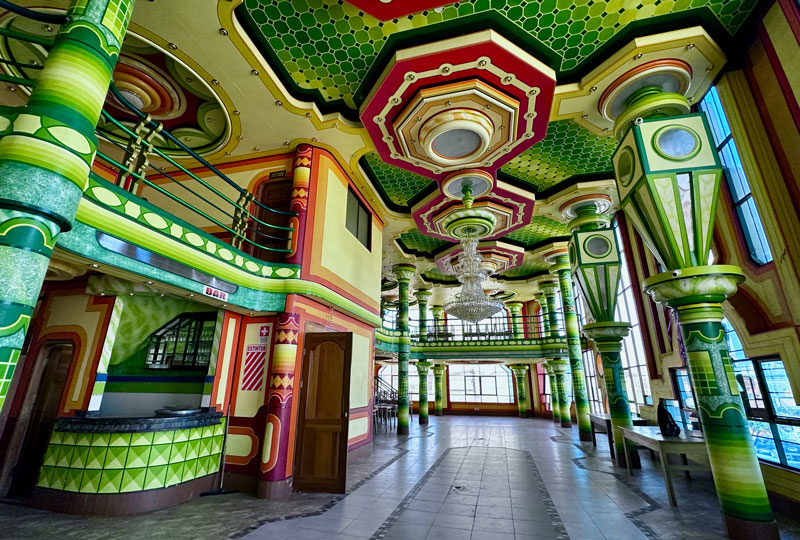
Card Title
Card Text - Lorem ipsum dolor sit amet, consectetur adipiscing elit, sed do eiusmod tempor incididunt ut labore et dolore magna aliqua.

Card Title
Card Text - Lorem ipsum dolor sit amet, consectetur adipiscing elit, sed do eiusmod tempor incididunt ut labore et dolore magna aliqua.

Card Title
Card Text - Lorem ipsum dolor sit amet, consectetur adipiscing elit, sed do eiusmod tempor incididunt ut labore et dolore magna aliqua.
Card.Simple

Card Title
Card Text - Lorem ipsum dolor sit amet, consectetur adipiscing elit, sed do eiusmod tempor incididunt ut labore et dolore magna aliqua.
Card.Hero
Card Title
Card Text - Lorem ipsum dolor sit amet, consectetur adipiscing elit, sed do eiusmod tempor incididunt ut labore et dolore magna aliqua.

Card Title
Card Text - Lorem ipsum dolor sit amet, consectetur adipiscing elit, sed do eiusmod tempor incididunt ut labore et dolore magna aliqua.
Card Title
Card Text - Lorem ipsum dolor sit amet, consectetur adipiscing elit, sed do eiusmod tempor incididunt ut labore et dolore magna aliqua.

Card Title
Card Text - Lorem ipsum dolor sit amet, consectetur adipiscing elit, sed do eiusmod tempor incididunt ut labore et dolore magna aliqua.
Card ButtonCustom Cards
List.Custom Card
List.Custom Card 2 Column
List.Custom Card 3 Column
List.Custom Card 4 Column
Detail.Card
Detail.Card Alt

Annual Conference Fellowships
Conference fellowships support session chairs and speakers participating in the SAH Annual International Conference.
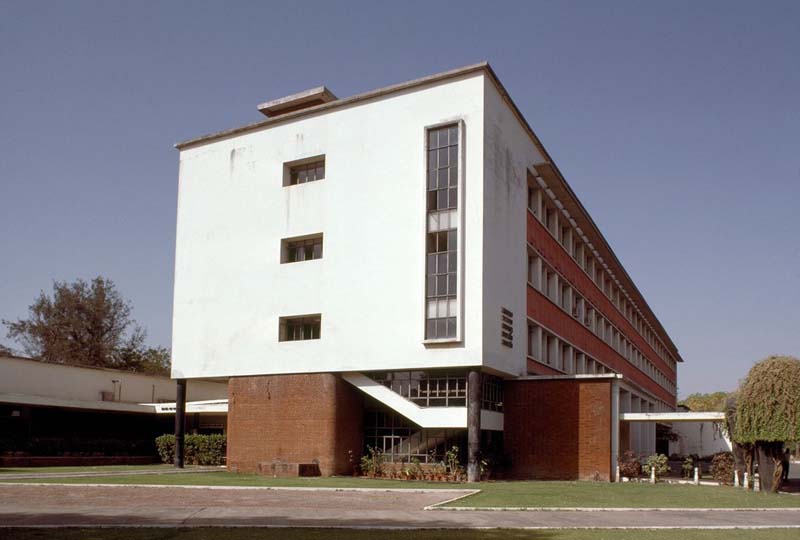

Detail.Card Simple
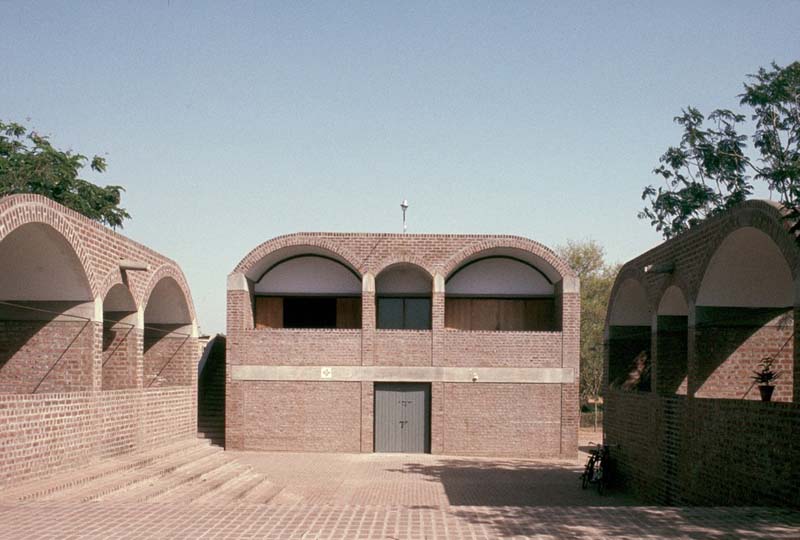
Another Card Title With Extra Text
This is a card summary. Has a limit of 255 characters. We can increase that if you think we need more text.
Detail.Card Hero


Content Types
Blogs
Blog List
Events
Events List
Call for Papers: Environment in Architecture’s History and Architecture in Environment’s History
United Kingdom
Dana Katz
IJIAclimate@gmail.com https://www.intellectbooks.com/international-journal-of-islamic-architecture?fbclid=IwY2xjawH8UD1leHRuA2FlbQIxMAABHXzur_z-nbA09jyeJW5_JxLA7iUs3Sm21bblkNfdV9B_7N8CfqVQ3NLebw_aem_UIEPy_52dLA1yRUv6Y891A
IJIAclimate@gmail.com https://www.intellectbooks.com/international-journal-of-islamic-architecture?fbclid=IwY2xjawH8UD1leHRuA2FlbQIxMAABHXzur_z-nbA09jyeJW5_JxLA7iUs3Sm21bblkNfdV9B_7N8CfqVQ3NLebw_aem_UIEPy_52dLA1yRUv6Y891A
Add to:
CALL FOR PAPERS
International Journal of Islamic Architecture (IJIA)
Special Issue: Environment in Architecture’s History and Architecture in
Environment’s History
Guest editor: Esra Akcan
Thematic volume planned for: 2027
Abstract submission deadline: June 1, 2025
One may misleadingly infer from the data on the built environment’s
responsibility in causing climate change that architects have not paid
attention to climate. To the contrary, however, there is hardly any other
criterion as ordinary and as omnipresent as climate in architectural design. A
forthcoming special issue of the International Journal of Islamic
Architecture will address the intersection of geopolitical and
ecological concerns in architecture and explore the multidirectional and
multilateral relations between the three words in its title—architecture,
history, environment. Articles will evaluate architecture’s role in climate
change by writing not only the history of architecture with respect to climate
but also the history of climate due to architecture.
From the writings of Vitruvius to guidebooks on corporate environmentalism,
references to environmental regulation and considerations of the sun and the
wind, the heat and the cold, rain and snow, have been regular inputs for
designers of buildings around the world. Established historians have provided a
large spectrum of definitions for climate, ranging from a criterion to be
controlled to one that inspires difference: Johann Winckelmann’s climate
determinism has long shaped the Euro-American notions of beauty and artistic
superiority; Bruno Taut has critiqued climate imperialism in Japan and Turkey;
Reyner Banham has offered a history of western modern architecture as a chain
of technological inventions that move towards a seamless closed interior; Ken
Frampton has critiqued this chain as a trivialization of cultural heritage; and
Daniel Barber has endorsed midcentury climatic modernism by foregrounding the
façade as the mediator between the interior of a building and the climate of
its exterior. This issue of IJIA will build on this discourse,
but pay particular attention to architecture’s accountability for climate
change over time. It particularly calls for contributions that critically
analyze historical examples when concerns over climate were complicit with
colonialism, nationalism, ethnocentrism, or religious fundamentalism. Given
that climate has served as a proxy for nation and race for much of the modern
and colonial periods, this special issue calls for a layered understanding of
the intertwinement between social, global and environmental issues in
architectural history.
The issue hopes to provide a
layered global and planetary history that extends the narrative beyond the
recent ones on the colonization and decolonization of the world due to the
British, French, and Spanish empires. Though helping to right earlier accounts
and expose the entanglement of modernity, capitalism, and coloniality, these
studies still exclude large portions of the world. Their accumulated outcome
ignores differences between lands before and after they were colonized by
either of the European imperial powers, and modernity’s other dark sides,
including environmental degradation caused by national partitions, religious
divides, or ethno-centrism.
Contributors are encouraged to
submit rigorously researched articles that acknowledge the unity of the earth’s
ecosystem while engaging the unique challenges of places traditionally
associated with the ‘Islamic world’. Authors might submit or analyze architectural
projects that come to the realization that the division of the global ecosystem
into nation-states produces environmental damages, and those that envision ways
of multispecies co-living. The special issue hopes that place-based – but not
place-bound – historical analyses will contribute to the writing of global and
planetary histories of modern architecture in a way that responds to call for
understanding geopolitical and ecological issues together.
Welcome are theoretically engaged articles that demonstrate the important role
of history writing in the intersectional matters of global peace and
environmental sustainability, and in bringing societies to a confrontation with
the relation between political and ecological harms of the past. Questions
addressed by contributors might include:
- How can historians evaluate architecture’s role in planetary crises by writing about climate in the history of architecture in such a way that architecture’s role in the history of climate (climate change) is also revealed?
- What are the buildings and large-scale projects that expose the intersections between political and ecological harms?
- (When) is climatic modernism complicit with colonialism, fascism, ethnocentrism or religious fundamentalism
- (How) does the division of the global ecosystem into nation states accelerate ecocide?
- What has been the relation between climate, race and nation as social constructs?
- (How) is global warming and global war related?
- What have been the consequences of the dismissal of local wisdom and conscious production of ignorance in climatization during colonization and nation-state formation?
- A lot has been written about the role of architects and planners in damaging
or improving the environment and biodiversity. What is the role of nonhuman
actors in damaging or improving the cites that humans built?
Articles offering historical and theoretical analysis (Design in Theory; DiT) should be between 6000 and 8000 words. Those on design and practice (Design in Practice; DiP) should be between 3000 and 4000 words. Architecture, urban, landscape or art historians, architects, urbanists, landscape architects, climate scientists, wildlife biologists, botanists, anthropologists, and geographers whose work resonates with the topic of this special issue are welcome to contribute discussions that address the critical themes of the journal. Collaboratively authored articles are also welcome. Contributions are welcomed from individuals at any stage of their careers, and advanced graduate students are encouraged to submit proposals.
Please send a title and a 400-word abstract to IJIA Assistant Editor Dana Katz at IJIAclimate@gmail.com by June 1, 2025.
Authors of proposals will be contacted by July 1, 2025, and may
be requested to submit full article drafts for consideration by January 30,
2026. All submissions will undergo blind peer review, editing, and revision.
For detailed author instructions, please consult
https://www.intellectbooks.com/international-journal-of-islamic-architecture.
Events Home Blocks
Call for Papers: Environment in Architecture’s History and Architecture in Environment’s History
United Kingdom
Dana Katz
IJIAclimate@gmail.com https://www.intellectbooks.com/international-journal-of-islamic-architecture?fbclid=IwY2xjawH8UD1leHRuA2FlbQIxMAABHXzur_z-nbA09jyeJW5_JxLA7iUs3Sm21bblkNfdV9B_7N8CfqVQ3NLebw_aem_UIEPy_52dLA1yRUv6Y891A
IJIAclimate@gmail.com https://www.intellectbooks.com/international-journal-of-islamic-architecture?fbclid=IwY2xjawH8UD1leHRuA2FlbQIxMAABHXzur_z-nbA09jyeJW5_JxLA7iUs3Sm21bblkNfdV9B_7N8CfqVQ3NLebw_aem_UIEPy_52dLA1yRUv6Y891A
Add to:
CALL FOR PAPERS
International Journal of Islamic Architecture (IJIA)
Special Issue: Environment in Architecture’s History and Architecture in
Environment’s History
Guest editor: Esra Akcan
Thematic volume planned for: 2027
Abstract submission deadline: June 1, 2025
One may misleadingly infer from the data on the built environment’s
responsibility in causing climate change that architects have not paid
attention to climate. To the contrary, however, there is hardly any other
criterion as ordinary and as omnipresent as climate in architectural design. A
forthcoming special issue of the International Journal of Islamic
Architecture will address the intersection of geopolitical and
ecological concerns in architecture and explore the multidirectional and
multilateral relations between the three words in its title—architecture,
history, environment. Articles will evaluate architecture’s role in climate
change by writing not only the history of architecture with respect to climate
but also the history of climate due to architecture.
From the writings of Vitruvius to guidebooks on corporate environmentalism,
references to environmental regulation and considerations of the sun and the
wind, the heat and the cold, rain and snow, have been regular inputs for
designers of buildings around the world. Established historians have provided a
large spectrum of definitions for climate, ranging from a criterion to be
controlled to one that inspires difference: Johann Winckelmann’s climate
determinism has long shaped the Euro-American notions of beauty and artistic
superiority; Bruno Taut has critiqued climate imperialism in Japan and Turkey;
Reyner Banham has offered a history of western modern architecture as a chain
of technological inventions that move towards a seamless closed interior; Ken
Frampton has critiqued this chain as a trivialization of cultural heritage; and
Daniel Barber has endorsed midcentury climatic modernism by foregrounding the
façade as the mediator between the interior of a building and the climate of
its exterior. This issue of IJIA will build on this discourse,
but pay particular attention to architecture’s accountability for climate
change over time. It particularly calls for contributions that critically
analyze historical examples when concerns over climate were complicit with
colonialism, nationalism, ethnocentrism, or religious fundamentalism. Given
that climate has served as a proxy for nation and race for much of the modern
and colonial periods, this special issue calls for a layered understanding of
the intertwinement between social, global and environmental issues in
architectural history.
The issue hopes to provide a
layered global and planetary history that extends the narrative beyond the
recent ones on the colonization and decolonization of the world due to the
British, French, and Spanish empires. Though helping to right earlier accounts
and expose the entanglement of modernity, capitalism, and coloniality, these
studies still exclude large portions of the world. Their accumulated outcome
ignores differences between lands before and after they were colonized by
either of the European imperial powers, and modernity’s other dark sides,
including environmental degradation caused by national partitions, religious
divides, or ethno-centrism.
Contributors are encouraged to
submit rigorously researched articles that acknowledge the unity of the earth’s
ecosystem while engaging the unique challenges of places traditionally
associated with the ‘Islamic world’. Authors might submit or analyze architectural
projects that come to the realization that the division of the global ecosystem
into nation-states produces environmental damages, and those that envision ways
of multispecies co-living. The special issue hopes that place-based – but not
place-bound – historical analyses will contribute to the writing of global and
planetary histories of modern architecture in a way that responds to call for
understanding geopolitical and ecological issues together.
Welcome are theoretically engaged articles that demonstrate the important role
of history writing in the intersectional matters of global peace and
environmental sustainability, and in bringing societies to a confrontation with
the relation between political and ecological harms of the past. Questions
addressed by contributors might include:
- How can historians evaluate architecture’s role in planetary crises by writing about climate in the history of architecture in such a way that architecture’s role in the history of climate (climate change) is also revealed?
- What are the buildings and large-scale projects that expose the intersections between political and ecological harms?
- (When) is climatic modernism complicit with colonialism, fascism, ethnocentrism or religious fundamentalism
- (How) does the division of the global ecosystem into nation states accelerate ecocide?
- What has been the relation between climate, race and nation as social constructs?
- (How) is global warming and global war related?
- What have been the consequences of the dismissal of local wisdom and conscious production of ignorance in climatization during colonization and nation-state formation?
- A lot has been written about the role of architects and planners in damaging
or improving the environment and biodiversity. What is the role of nonhuman
actors in damaging or improving the cites that humans built?
Articles offering historical and theoretical analysis (Design in Theory; DiT) should be between 6000 and 8000 words. Those on design and practice (Design in Practice; DiP) should be between 3000 and 4000 words. Architecture, urban, landscape or art historians, architects, urbanists, landscape architects, climate scientists, wildlife biologists, botanists, anthropologists, and geographers whose work resonates with the topic of this special issue are welcome to contribute discussions that address the critical themes of the journal. Collaboratively authored articles are also welcome. Contributions are welcomed from individuals at any stage of their careers, and advanced graduate students are encouraged to submit proposals.
Please send a title and a 400-word abstract to IJIA Assistant Editor Dana Katz at IJIAclimate@gmail.com by June 1, 2025.
Authors of proposals will be contacted by July 1, 2025, and may
be requested to submit full article drafts for consideration by January 30,
2026. All submissions will undergo blind peer review, editing, and revision.
For detailed author instructions, please consult
https://www.intellectbooks.com/international-journal-of-islamic-architecture.
